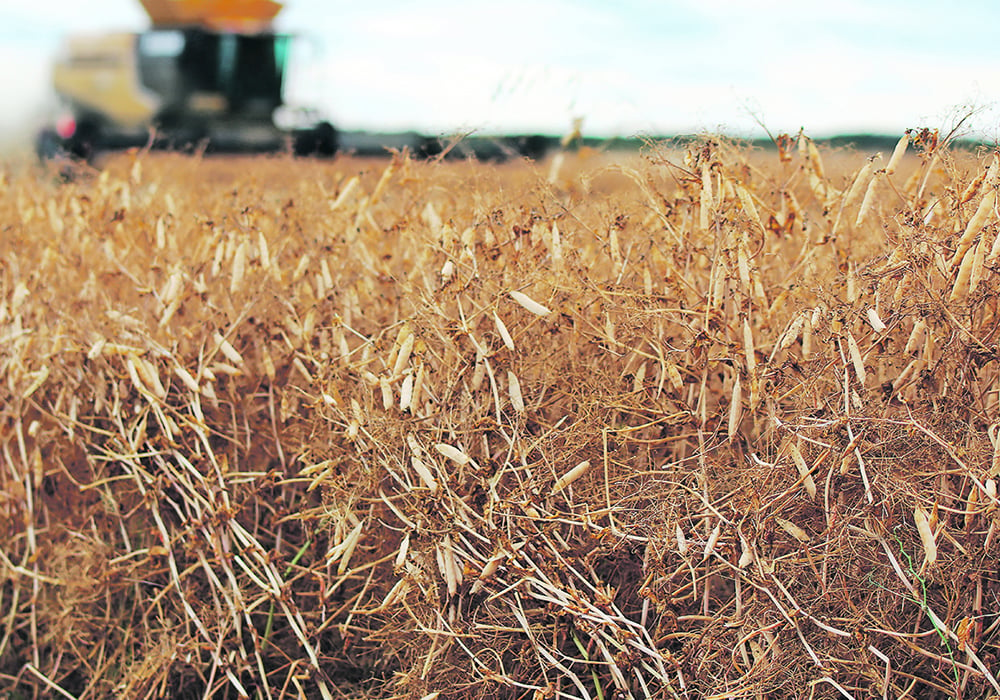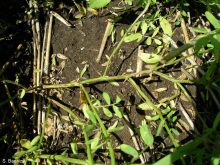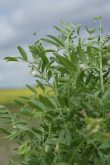New funding will be used to develop new tools, knowledge and traits that can then get incorporated into new varieties
The quest to breed better root resistance in peas is the focus of a genomics research project announced last week by Saskatchewan Pulse Growers.
The organization announced it will also fund a genomics project designed to find tools to breed better lentil varieties.
Both projects are co-funded through Genome Canada’s Climate-Smart Agriculture and Food Systems Initiative. SPG will contribute $1.4 million toward the $12.8 million research.
Sherrilyn Phelps, director of research and development at SPG, described the projects as pre-breeding research.
“They’re developing tools and knowledge and traits that can then get incorporated into new varieties,” she said. “So the ultimate benefit for growers in the end is development of varieties that are more suited to our conditions.”
Read Also

New coal mine proposal met with old concerns
A smaller version of the previously rejected Grassy Mountain coal mine project in Crowsnest Pass is back on the table, and the Livingstone Landowners Group continues to voice concerns about the environmental risks.
The lentil project, Activating genomics to accelerate climate-smart crop delivery, is led by Kirstin Bett and Curtis Pozniak at the University of Saskatchewan.
Marcus Samuel, from the University of Calgary, and Sateesh Kagale, from the National Research Council in Saskatoon, are leading PEACE, or Pea Climate-Efficient: Developing climate-resilient, low carbon footprint field pea as a preferred rotation crop through the inter-disciplinary integration of genomic technologies.
Phelps said the first project is a lentil-wheat project from a pulse producers’ perspective. It will identify the traits that work best in a lentil-durum rotation so as varieties are developed, they work well in that system, are high-yielding and both crops benefit.
“It’s really identifying the traits and being able to use those selection tools in their breeding programs to select the positive attributes so the varieties coming out we know will fit well into the existing systems,” she said.
Phelps said researchers will look at which characteristics are important when growing crops in sequence. While most rotations would include a third crop, she said adding that crop at this stage would make the project too complex.
Phelps described it as a “deeper dive” into each crop.
The pea project targets stress tolerance and root rot and will look for new sources of resistance that could be bred into future varieties.
“The existing resistance that is being brought into varieties right now is only partial resistance so this project is larger in scope and looking at various different other alternative sources throughout the world and throughout the germplasm that’s available and hopefully be able to identify some new traits that can be incorporated,” she said.
Improving the varieties will help peas remain a staple in crop rotations and ensure success.
Root rot is a worldwide problem but more recent on the Canadian Prairies.
Phelps said the problem began with fresh peas and migrated from Europe to the United States.
“In 2012 we identified it here but we likely have been dealing with the problem for a longer time but just didn’t know what it was,” she said.
While aphanomyces is the most troublesome and a focus of many root rot research projects, the real problem occurs when aphanomyces and another root rot pathogen occur together and form a complex. Often, a fusarium species with the root rot causes the most trouble.
“A lot of the root rot is also starting to look at resistance to other pathogens as well,” Phelps said.
The climate angle to both projects reflects the federal government’s priorities on climate change and greenhouse gas mitigation.
“A lot of projects are starting to have that component,” Phelps said. “In the lentils, it’s looking at abiotic stress tolerance, the impact of the lentils on greenhouse gas mitigation in combination with durum in rotation. On the pea side, it’s looking at the abiotic stress, the amount of nitrogen fixation and can we reduce greenhouse gas emissions by including peas or peas that are higher at fixing nitrogen.”
Phelps said farmers shouldn’t expect new varieties at the end of these four-year projects.
“But we will see those tools and traits that can be incorporated into breeding programs. We’re really looking at 10 years away before a grower is going to see something in his field that might have stemmed from this original project.”
Other funders of the projects are Genome Canada, Genome Alberta, Genome Prairie, Alberta Pulse Growers, Manitoba Pulse and Soybean Growers, Saskatchewan’s Agriculture Development Fund, Saskatchewan Wheat Development Commission, Western Grains Research Foundation and Results Driven Agriculture Research in Alberta.
Genome Canada announced this $30-million interdisciplinary research program in May 2022.


















